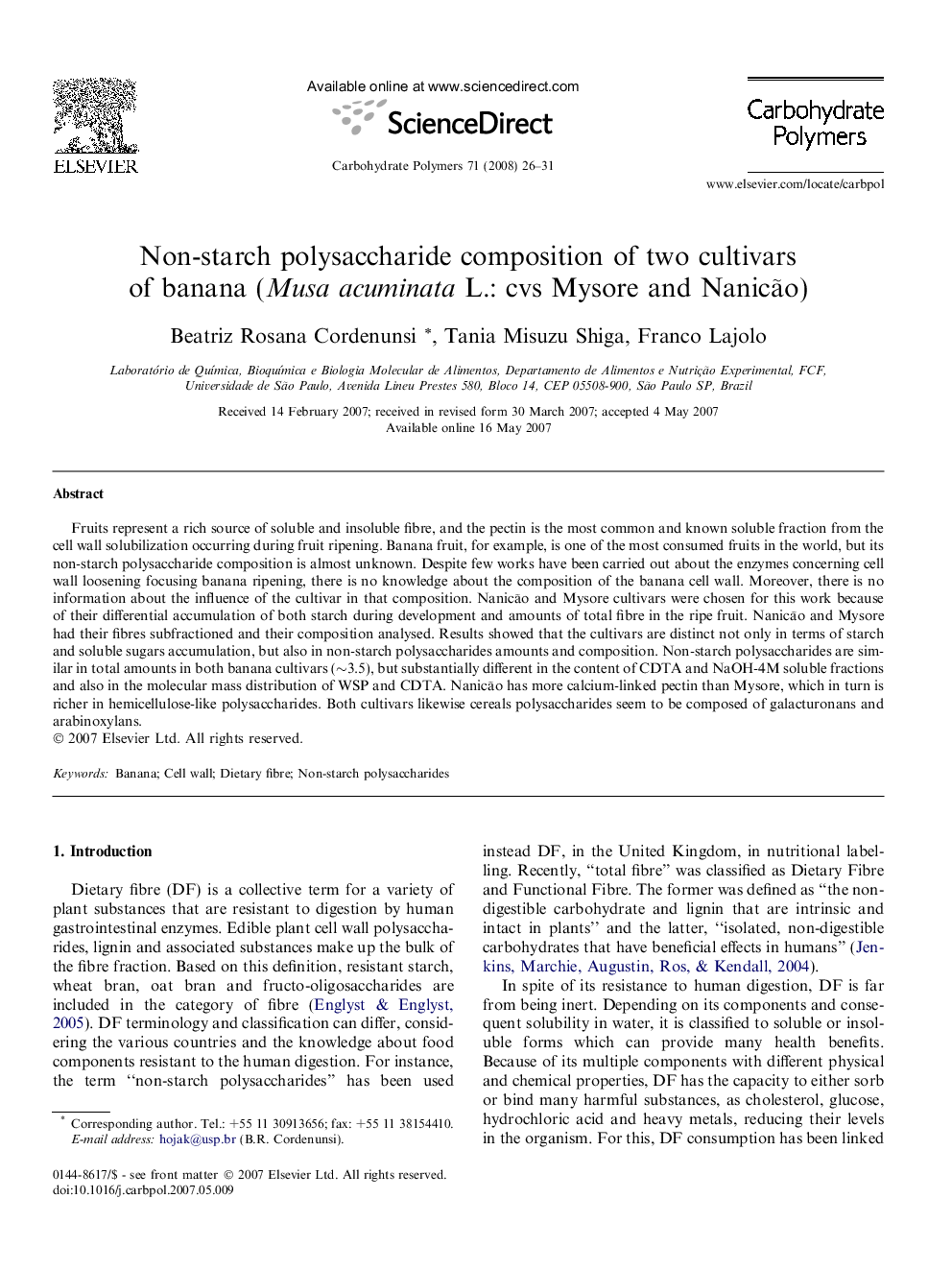| Article ID | Journal | Published Year | Pages | File Type |
|---|---|---|---|---|
| 1386560 | Carbohydrate Polymers | 2008 | 6 Pages |
Fruits represent a rich source of soluble and insoluble fibre, and the pectin is the most common and known soluble fraction from the cell wall solubilization occurring during fruit ripening. Banana fruit, for example, is one of the most consumed fruits in the world, but its non-starch polysaccharide composition is almost unknown. Despite few works have been carried out about the enzymes concerning cell wall loosening focusing banana ripening, there is no knowledge about the composition of the banana cell wall. Moreover, there is no information about the influence of the cultivar in that composition. Nanicão and Mysore cultivars were chosen for this work because of their differential accumulation of both starch during development and amounts of total fibre in the ripe fruit. Nanicão and Mysore had their fibres subfractioned and their composition analysed. Results showed that the cultivars are distinct not only in terms of starch and soluble sugars accumulation, but also in non-starch polysaccharides amounts and composition. Non-starch polysaccharides are similar in total amounts in both banana cultivars (∼3.5), but substantially different in the content of CDTA and NaOH-4M soluble fractions and also in the molecular mass distribution of WSP and CDTA. Nanicão has more calcium-linked pectin than Mysore, which in turn is richer in hemicellulose-like polysaccharides. Both cultivars likewise cereals polysaccharides seem to be composed of galacturonans and arabinoxylans.
